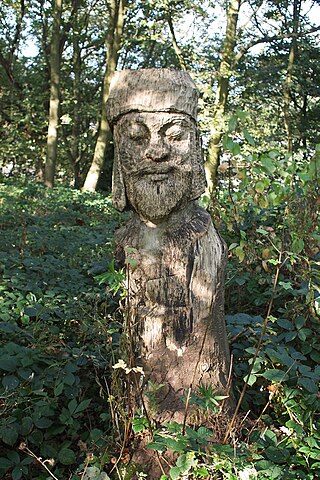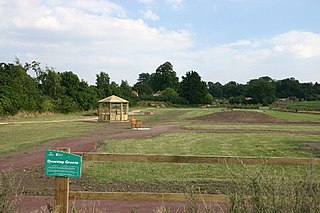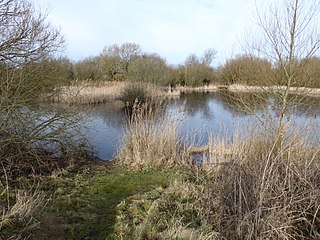Derbyshire Wildlife Trust is one of 46 local Wildlife Trusts around the UK working to promote and protect local wildlife. It covers the whole of Derbyshire and was founded in 1962 in response to environmental threats to the local countryside, since when it has continued to grow. The trust is now based at East Mill on the River Derwent in the town of Belper, Derbyshire. It is a registered charity, supported by more than 14,000 members and over 500 volunteers.

This page gives an overview of the complex structure of environmental and cultural conservation in the United Kingdom.

The Woodland Trust is the largest woodland conservation charity in the United Kingdom and is concerned with the creation, protection, and restoration of native woodland heritage. It has planted over 50 million trees since 1972.

NatureScot is the operating name for the body formally called Scottish Natural Heritage. It is an executive non-departmental public body of the Scottish Government responsible for the country's natural heritage, especially its natural, genetic and scenic diversity. It advises the Scottish Government on nature conservation, and acts as a government agent in the delivery of conservation designations, i.e. national nature reserves, local nature reserves, national parks, Sites of Special Scientific Interest (SSSIs), Special Areas of Conservation, Special Protection Areas and the national scenic areas. It receives annual funding from the Government in the form of Grant in Aid to deliver Government priorities for the natural heritage.
Land trusts are nonprofit organizations which own and manage land, and sometimes waters. There are three common types of land trust, distinguished from one another by the ways in which they are legally structured and by the purposes for which they are organized and operated:
The Black Country Urban Forest (BCUF) is a project to make urban forestry the characteristic landscape of one of England's industrial areas, The Black Country.

Wiltshire Wildlife Trust is a conservation charity based in Devizes, England which owns and manages 40 nature reserves in Wiltshire and Swindon. It also works to encourage Wiltshire's communities to live sustainable lifestyles that protect the environment.
Dorset Wildlife Trust (DWT) is a wildlife trust covering the county of Dorset, United Kingdom. The trust was founded in 1961 as Dorset Naturalists' Trust, to protect and conserve the wildlife and natural habitats of the county.

A pocket park is a small park accessible to the general public. While the locations, elements, and uses of pocket parks vary considerably, the common defining characteristic of a pocket park is its small size. Typically, a pocket park occupies one to three municipal lots and is smaller than 0.5 hectares in size.

The Trustees of Reservations is a non-profit land conservation and historic preservation organization dedicated to preserving natural and historical places in the Commonwealth of Massachusetts. It is the oldest land conservation nonprofit organization of its kind in the world and has 100,000 member households as of 2021. In addition to land stewardship, the organization is also active in conservation partnerships, community supported agriculture (CSA), environmental and conservation education, community preservation and development, and green building. The Trustees owns title to 120 properties on 27,000 acres (11,000 ha) in Massachusetts, all of which are open to the public. In addition, it holds 393 conservation restrictions to protect an additional 20,000 acres (8,100 ha). Properties include historic mansions, estates, and gardens; woodland preserves; waterfalls; mountain peaks; wetlands and riverways; coastal bluffs, beaches, and barrier islands; farmland and CSA projects; and archaeological sites.

Fields in Trust is a British charity set up in 1925 as the National Playing Fields Association (NPFA), by Brigadier-General Reginald Kentish and the Duke of York, later King George VI, who was the first president, which protects parks and green spaces and promotes the cause of accessible spaces for play, sports and recreation in British cities and towns.
Over the centuries the roles of rivers as part of the city has altered many times from the original use for the irrigating crops in nearby fields, as well as being an essential resource in establishing a permanent settlement. However, when the industrial revolution took place in the 19th century the role of the rivers in cities altered and it became a far more valuable resource as it allowed not only for the transportation of goods from town to town but also became the basis for the expansion and improvement of the trading prowess of the city. This transportation of goods was done through the construction of a canal network spreading across the country which tamed the rivers sufficiently and so therefore allowed for the movement of goods such as coal to move from place to place. Furthermore, after the advancement of the railway network which now took over most of the movement of goods throughout the country, this left the rivers and canals of Britain without a role in Britain’s transport network. This allowed areas of the canal and river networks to become polluted through chemical waste and public misuse, which caused difficulties for the animals for which the river and its surrounding wetlands and marshes were their natural habitats. Yet since the 1950s there has been a dramatic increase in the number of riverside developments which have not only brought increased money into the area but have also redeveloped and enhanced the natural environment and increased the aesthetic qualities of these areas on the whole.

A King George's Field is a public open space in the United Kingdom dedicated to the memory of King George V (1865–1936).
Bankside Open Spaces Trust (BOST) is a horticulture, gardening and management of urban open space charity, based in Bankside, the southern bank by the River Thames, Southwark, Central London, England. BOST works local communities and organisations in London, such as Tate Modern community garden, to improve, create and enjoy the parks, gardens, green spaces, and, passive and active recreation areas.

The Heaton Woods Trust is both the name for the charity and the woodland it cares for located mainly in Heaton, Bradford, West Yorkshire, England but also stretches into Shipley. The Heaton Woods Trust is a registered charity that was established in 1977. The Heaton Woods Trust is responsible for the care and protection of the woods for the benefit of present and future generations.

The South End Lower Roxbury Open Space Land Trust(SELROSLT) is a membership-supported, non-profit organization that owns, protects, and manages 16 community gardens and pocket parks in the South End and Lower Roxbury neighborhoods of Boston, in the U.S. state of Massachusetts. It is a member of the American Community Gardening Association, the Boston Natural Areas Network, the Land Trust Alliance, and a partnering grantee of the New England Grassroots Environment Fund.

Doorstep Greens are locally owned and run public spaces across England. They were first created by the Countryside Agency (CA) in a project started in 2001. The majority of the funding came from the New Opportunities Fund which later became the Big Lottery Fund although the Countryside Agency did input staff and some of its own resources. The Agency set out to find green spaces which could be organised into relatively small parks and then create a local charitable trust to own, fundraise for, and run each space in perpetuity. This followed from the completion of the CA's Millennium Green scheme, which created similar areas to celebrate the turn of the millennium from 1996-2000. The Countryside Agency has since become part of Natural England, who have nominal national responsibility for this scheme.
Wildwood Trust is a woodland discovery park in Herne, near Canterbury in Kent, England. It features over fifty species of native British animals such as deer, badgers, wild boar, wolves and brown bear. It is located on the main road A291 between Herne Bay and Canterbury.

Romney Warren or Romney Marsh is a 10.9-hectare (27-acre) country park and Local Nature Reserve in New Romney in Kent. It is owned by Folkestone and Hythe District Council and managed by the Romney Warren Project, which is a partnership between Folkestone and Hythe District Council, Romney Warren Charitable Trust, Kent Wildlife Trust and Romney Marsh Countryside Partnership. It is part of the Dungeness, Romney Marsh and Rye Bay Ramsar internationally important wetland site and Site of Special Scientific Interest.

Chiswell Walled Garden is a community walled garden, located on the Isle of Portland, Dorset, England. It is found in the village of Chiswell, close to Chesil Beach, within the remaining ruins of an old Jacobean house. The garden was created between 2001-06 by the Chiswell Community Trust, with funding from Countryside Agency under their Doorstep Green Initiative. It is maintained by volunteer members of the trust and is open to the public.














